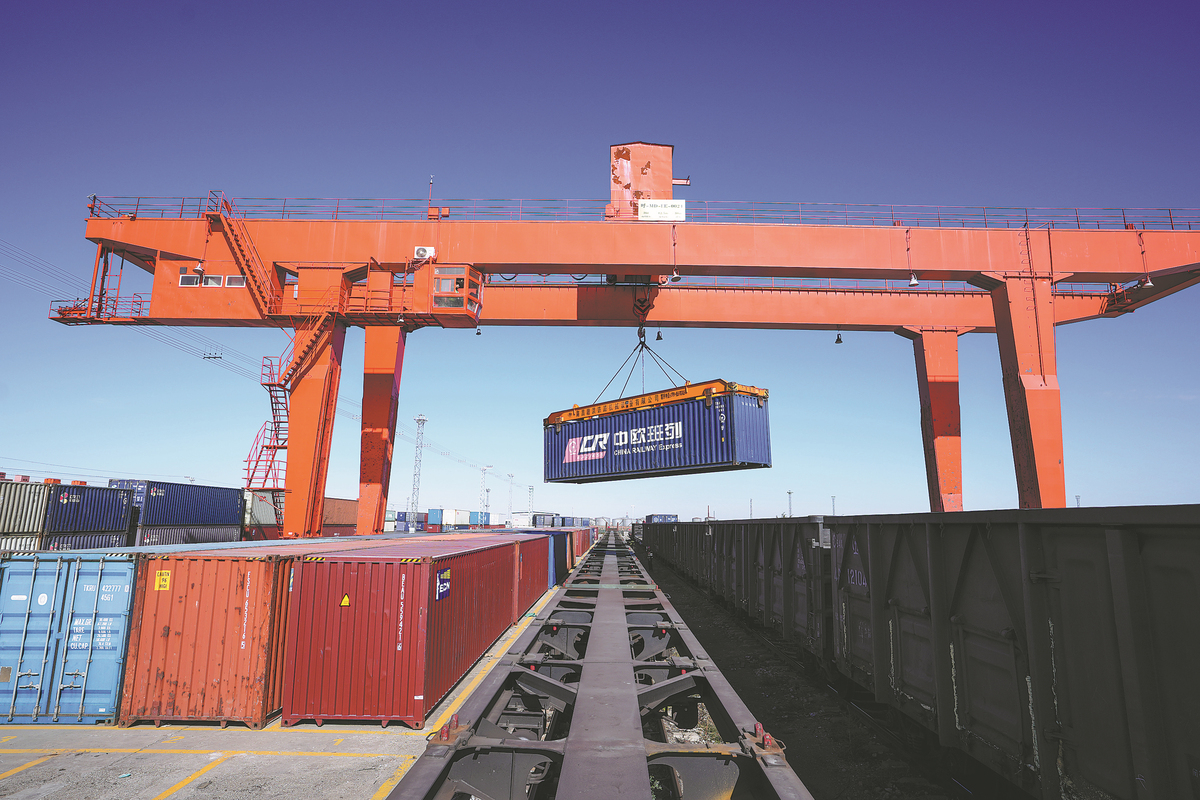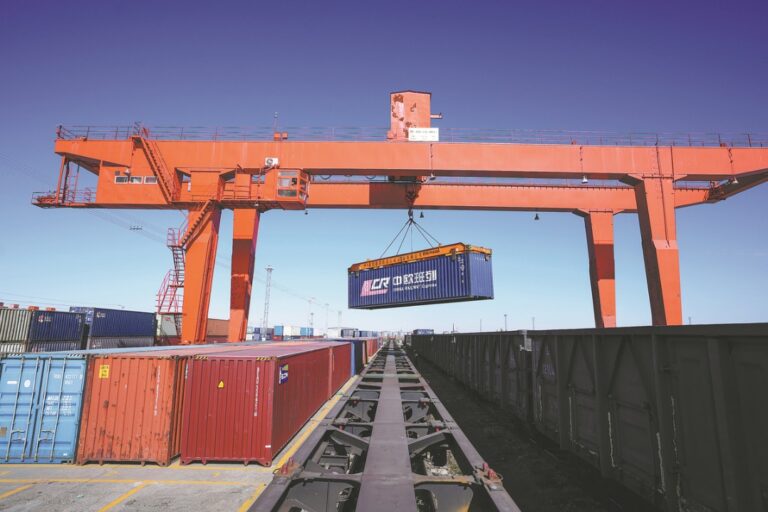
A gantry crane hoists containers for a freight train between China and Europe in Shilingolliu, Inner Mongolia Autonomous Region, October 18, 2023. Yang Jinyue/China Daily
Cargo carriers are turning to rail services between China and Europe, underpinned by the Belt and Road Initiative, as a transport alternative following the disruption to international shipping caused by the Red Sea attack, highlighting the strategic importance of the rail route in stabilizing global supply chains.
Yemen’s Houthi rebels have been attacking “Israeli-aligned and Israel-bound” merchant ships since November in solidarity with Palestinians in the Gaza Strip, increasing risks for shipping companies moving cargo along one of the world’s busiest shipping lanes, resulting in higher fares and longer delays.
Some small-package freight is shifting to rail transport, with the China-Europe railway in particular seeing a significant increase in freight capacity from China to continental Europe since pre-crisis levels, according to a recent report from Fitch Ratings.
“Since January, the number of inquiries (about China-Europe freight train services) has surged more than 10 times and the actual volume of exports has increased three to four times,” said Kong Weidong, Zhengzhou branch manager at freight company THI Group (Shanghai) Ltd.
The cross-border rail freight service takes about 12 to 18 days from Chinese cities to European destinations and costs about $6,500 per container, Kong said.
Enquiries about China-Europe freight train services have increased significantly since the beginning of this year, said Kang Yingfeng, deputy general manager of China Railway International Intermodal Transport, the national operator of China-Europe freight train services and a subsidiary of China Railway Container Transport.
He said there was great interest in a new China-Europe freight route that combines rail and sea transport across the Caspian and Black Seas, which would also pass through countries such as Kazakhstan and Georgia before reaching European countries.
“Customers from China, Europe and the US, as well as major international logistics companies such as DHL and Kuehne Nagel, have shown strong interest in this new route along the transcontinental sea route, which will enable cargo movements from China to Georgia, Turkey, Central and Eastern Europe and Southern Europe,” he said.
DHL said requests for rail shipments to Russia had increased by about 40 percent since container ships switched to longer routes in December, the Financial Times reported last month.

